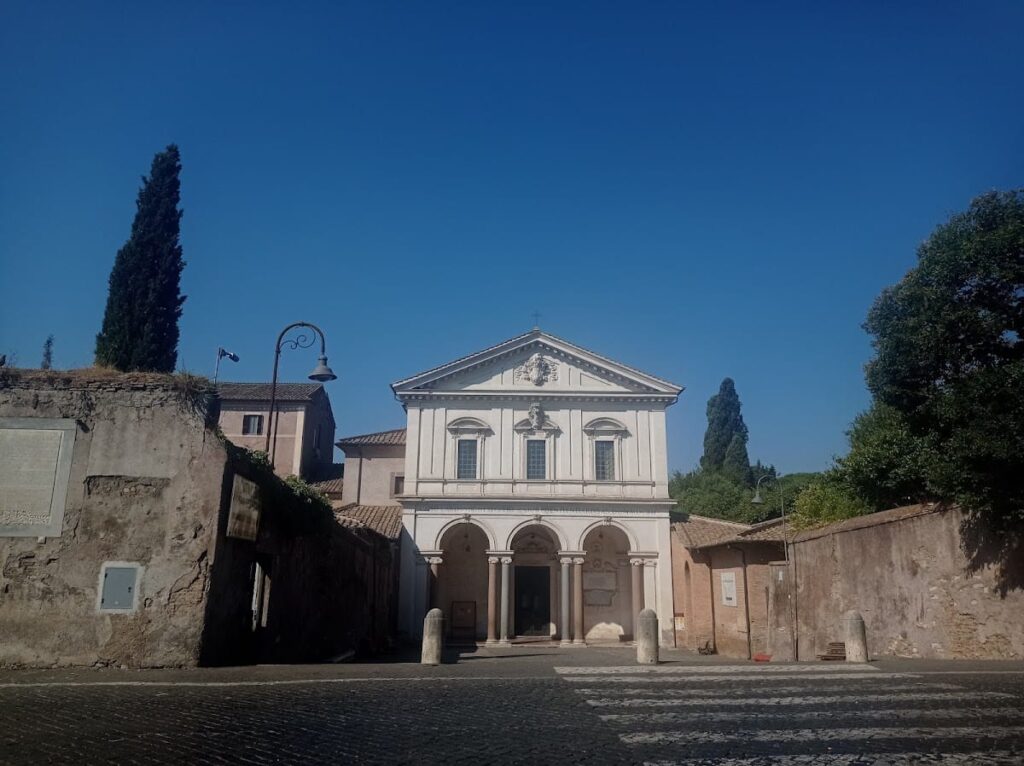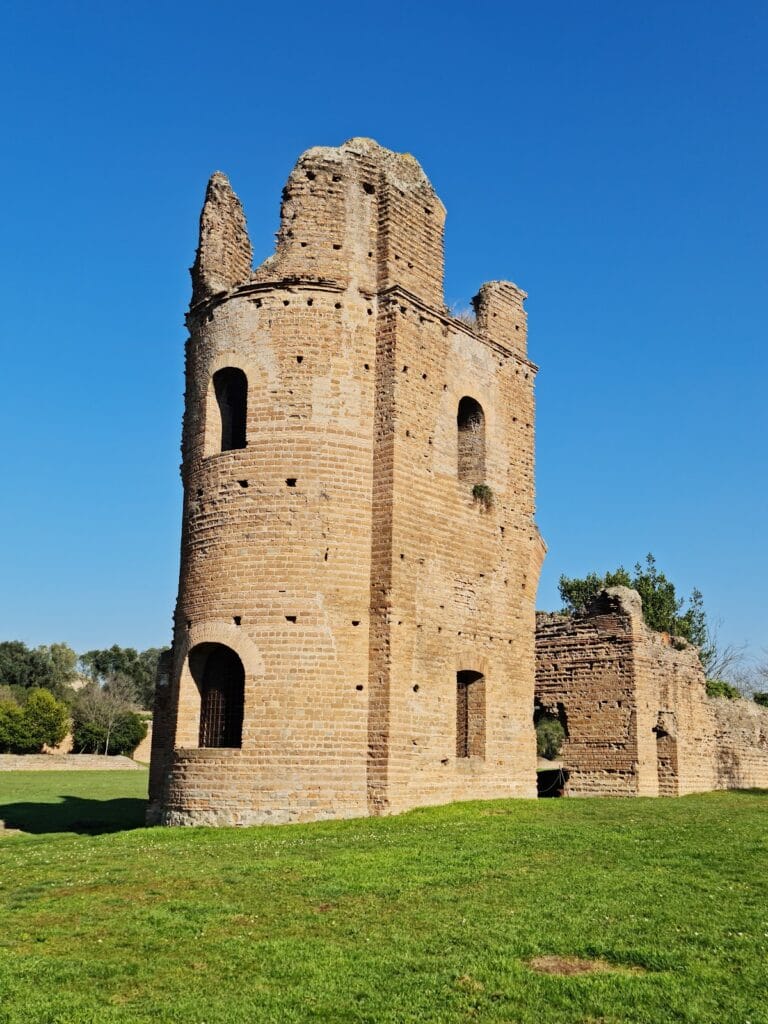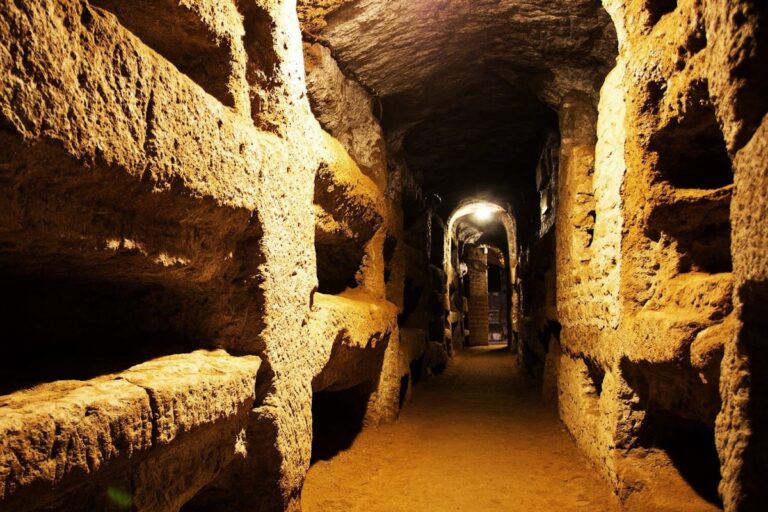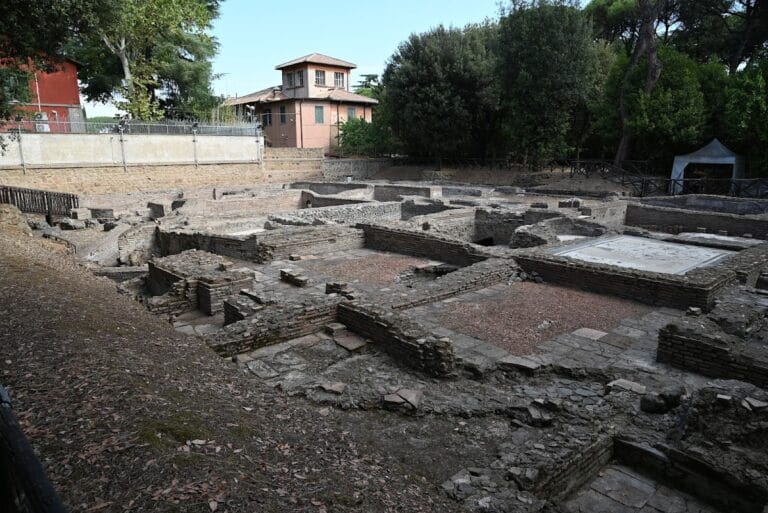Catacombs of Saint Sebastian: An Early Christian Burial Site in Rome
Visitor Information
Google Rating: 4.6
Popularity: Medium
Google Maps: View on Google Maps
Official Website: www.catacombe.org
Country: Italy
Civilization: Roman
Remains: Burial
History
The Catacombs of Saint Sebastian are located in Rome, within the Ardeatino district along the ancient Via Appia Antica, in the province of Rome, Italy. Originally, this site was a pozzolana quarry, a type of volcanic ash used in Roman concrete, which was abandoned by the end of the 2nd century CE. After its abandonment as a quarry, the area became a burial ground initially used by pagans before being adapted for Christian burials.
By the mid-3rd century, the site gained significant Christian importance. It was known as “memoria Apostolorum,” meaning “memory of the Apostles,” because it was believed to have temporarily housed the relics of the Apostles Peter and Paul. Early Christian documents from the 4th and 5th centuries, such as the Depositio Martyrum and the Martyrologium Hieronymianum, record the transfer of Peter’s relics to these catacombs around 258 CE. This association elevated the site’s religious status among early Christians.
The catacombs are closely linked to three martyrs: Saint Sebastian, Quirinus, bishop of Sescia in Pannonia, and Eutychius. Saint Sebastian was martyred during the persecution under Emperor Diocletian and was buried here on January 20. His relics were moved inside Rome’s city walls in the 9th century but were later returned to a chapel above the catacombs, maintaining his connection to the site.
In the early 4th century, the small open quarry area, known as the piazola, was filled in to create an embankment. This embankment supported the construction of a basilica commissioned during the reign of Emperor Constantine. The Constantinian basilica was later rebuilt in 1933 on the original foundations. Unlike many other Christian burial sites, the catacombs remained accessible throughout history, preserving their continuous religious and cultural significance.
The name “catacombs” itself comes from a Greek term meaning “near the hollow,” originally referring to a depression near the Via Appia. This term eventually came to describe the underground burial networks like those at Saint Sebastian.
Remains
The Catacombs of Saint Sebastian consist of a complex system of three underground gallery levels with multiple rooms and burial chambers. Originally, there were four floors, but the first floor is now almost entirely destroyed. The galleries contain both simple and monumental tombs, reflecting burials of slaves, freedmen, and early Christians.
Above ground, the Constantinian basilica of San Sebastiano fuori le mura stands on an embankment built over the filled piazola. Inside the basilica’s right aisle, 13th-century arches connect the nave to the apse of the Chapel of the Relics. This chapel houses several 4th-century sarcophagi and fragments discovered during excavations.
A staircase within the basilica leads down to the catacombs’ tunnels. Among the rooms is a late 4th-century painted chamber depicting four scenes from the life of the prophet Jonah. The Crypt of Saint Sebastian, restored in modern times, contains an altar and a bust attributed to the sculptor Gian Lorenzo Bernini.
Near the ascent to the basilica are three mausolea dating from the second half of the 2nd century. The Mausoleum of Marcus Clodius Hermes features exterior paintings of funeral meals and a scene of the healing of the demon-possessed Gerasimus. It also bears an inscription with the owner’s name and a dome decorated with a gorgoneion, a protective head of a mythical creature.
The Mausoleum of the Innocentiores, linked to a burial society, has a dome adorned with refined stuccoes. Its niches contain inscriptions written in Greek characters but in the Latin language. Graffiti inside include the Christian acronym ΙΧΨΥΣ, meaning “Jesus Christ, God’s Son, Savior.”
The Mausoleum of the Adze, named after the tool depicted on its exterior, is decorated with vine shoots growing from kantharoi, which are ancient drinking cups, placed on false columns.
A covered portico called the triclia was used for commemorative meals. Its walls bear over 600 graffiti invoking the Apostles Peter and Paul. Nearby stands a small marble-covered aedicule believed to have housed the apostles’ relics during their stay in the catacombs. A covered room with a well for water is also part of this area.
Christian symbols such as anchors and fish appear in the mausolea, indicating the site’s later Christian use. The preservation of the catacombs varies; some frescoes and stuccoes remain well-preserved, while the original first floor is largely lost. Numerous graffiti and inscriptions survive, providing valuable insight into early Christian devotion and burial customs.










